Structural Integrity – San Diego CA
Pillars of strength can crumble when faced with the destructive force of water damage. Ensuring structural integrity becomes paramount when your property suffers this type of tragedy. In this article, we will explore the vital steps you need to take to preserve the structural integrity of your foundation and keep your property safe.
Water damage can compromise a building’s structural stability, posing serious risks to its occupants. An initial assessment by certified experts is crucial to identifying the extent of the damage and formulating an effective restoration plan. Every aspect needs careful attention, from waterproofing and moisture control measures to repairing weakened supports.
Discover the crucial steps to safeguarding your property’s foundation after water damage, and receive valuable insights from our trusted experts. Together, let’s build a foundation that withstands any challenge and ensures the safety and longevity of your property.
Understanding the Impact of Water Damage on Structural Integrity
Water damage can originate from various sources, including heavy rainfall, flooding, plumbing failures, or even an unnoticed leak over time. When water infiltrates a building, it can seep into walls, floors, and foundations, posing a significant threat to the property’s structural integrity. As water permeates the materials, it can weaken the components holding the structure together, leading to potentially catastrophic failures if not addressed promptly. The structural integrity of a property is paramount, as the impact of moisture on wooden beams, concrete, and other building materials can be profound, contributing to deterioration, mold growth, and even pest infestations.
The physical properties of materials change when exposed to excessive moisture. Wood, for example, can warp, swell, or rot, compromising its strength and stability. Concrete, while generally more resistant to water, can develop cracks and spalling when subjected to prolonged exposure to moisture. These changes in material properties can lead to misalignment, shifting, and eventually, failure. Understanding these dynamics is essential for homeowners and property managers to recognize the urgency of addressing water damage before it escalates into a more significant threat.
Moreover, the impact of water damage extends beyond just the physical structure. It can affect the safety and well-being of occupants, leading to health issues stemming from mold growth and compromised air quality. The emotional toll of dealing with property damage can also be overwhelming, as families are often displaced and face financial burdens during the restoration process. Recognizing the critical nature of these impacts underscores the importance of taking immediate action to protect not only the building but also the people who inhabit it.
Signs of Structural Damage After Water Damage
Detecting signs of structural damage after water exposure is crucial for any property owner. One of the most common indicators is visible water stains on walls or ceilings, often suggesting prolonged moisture exposure. These stains can vary in color, from yellowish to brown, and may indicate that water has penetrated the building material, leading to potential mold growth and structural deterioration. Homeowners should also be on the lookout for peeling paint or wallpaper, which can signal moisture trapped beneath the surface, weakening the structural integrity of the underlying materials.
Another critical sign of structural damage is the presence of cracks in walls, floors, or foundations. Hairline cracks can be minor, but larger fissures may indicate more severe issues. Vertical cracks in walls can suggest settling foundations, while horizontal cracks might point to pressure build-up from water intrusion. If doors or windows are suddenly difficult to open or close, this misalignment can also be a sign that the structure has shifted due to water damage. Observing these changes early on can help prevent further deterioration and costly repairs, ultimately protecting the structural integrity of the property.
Additionally, the presence of mold and mildew is a clear indication that water damage has occurred. Mold thrives in damp environments, and its growth can lead to significant health risks for occupants. Musty odors and visible mold patches should prompt immediate investigation and remediation efforts. Regular inspections and maintenance can help catch these signs early, allowing for effective interventions that can preserve the property’s structural integrity.
Importance of Addressing Structural Damage Promptly
Addressing structural damage promptly is critical for several reasons. First and foremost, the longer water damage remains unmitigated, the more extensive and costly the repairs will become. If left untreated, what may start as a minor issue can quickly escalate into a major structural failure. Early intervention minimizes repair costs and reduces the risk of potential hazards for occupants, such as mold exposure and compromised air quality. By acting swiftly, homeowners can protect both their income and the health of those living within the property.
Furthermore, timely repairs can prevent secondary damage from occurring. For example, if water-damaged materials are not removed or treated, they may lead to further complications, such as pest infestations or the spread of secondary issues can create additional layers of complexity in the restoration process, extending the timeline and costs involved. By addressing structural damage as soon as it is detected, property owners can create a more efficient restoration plan that focuses on the root cause of the problem.
Lastly, prompt action can help maintain the property’s value and marketability. A property that has suffered from water damage but has been addressed quickly and effectively demonstrates to potential buyers that it has been well cared for. Conversely, lingering issues can significantly detract from a property’s appeal and may lead to decreased value in the long run. Ensuring that structural integrity is preserved after water damage is not only crucial for safety but also for maintaining the overall value of the investment.
Steps to Take After Water Damage to Preserve Structural Integrity
After experiencing water damage, the first step is to ensure safety. Before entering the affected area, it’s vital to turn off the power supply to prevent electrical hazards. Once it’s safe, the next step is to assess the extent of the damage. This initial evaluation can help determine whether professional assistance is needed immediately or if there are manageable tasks that can be performed independently. Documenting the damage with photos and notes can also benefit insurance claims and restoration planning.
Once safety assessments are complete, the next crucial step is to remove any standing water. Depending on the volume of water, this can be done using pumps or wet vacuums. Drying out the area promptly is essential to prevent further damage and mold growth. Opening windows and doors to facilitate ventilation, using fans, and using dehumidifiers can significantly expedite the drying process. The faster the area dries, the less likely structural integrity will be compromised. Ensuring the structural integrity of the building is key to preventing long-term damage.
After the area has been dried, it’s important to clean and disinfect surfaces that may have come into contact with contaminated water. Mold spores can begin to proliferate within 24 to 48 hours following water exposure, so it’s critical to take steps to clean surfaces and remove any damp materials. This may involve discarding saturated carpets, drywall, or insulation. Implementing these initial steps can help lay the groundwork for more extensive repairs and restoration efforts.
Hiring a Professional to Assess and Repair Structural Damage
When faced with significant water damage, hiring a professional to assess the situation is often the best course of action. Certified experts possess the necessary training and experience to evaluate the extent of the structural damage accurately. They can identify hidden issues that may not be apparent to an untrained eye, ensuring that all problem areas are addressed comprehensively. Additionally, professionals are equipped with specialized tools and techniques designed to provide effective assessments and repairs.
One key benefit of enlisting professional help is gaining access to their knowledge of building codes and regulations. Structural repairs often require adherence to local codes, and professionals are familiar with these requirements. They can ensure that all restoration work meets the necessary standards, which is especially important if the property is to be sold in the future. By working with experts, homeowners can avoid potential legal complications that may arise from improper repairs.
Moreover, hiring professionals can save time and reduce stress. Water damage restoration can be complex, and managing it alone can be overwhelming, particularly for those without experience. Professionals can streamline the restoration process, coordinating various aspects of the project, from initial assessments to repairs and cleanup. This allows homeowners to focus on other priorities while ensuring their property is restored effectively and efficiently.
Common Methods Used to Restore Structural Integrity After Water Damage
Restoring structural integrity after water damage typically involves several common methods tailored to address the specific issues encountered. One prevalent technique is the use of structural drying equipment. This includes industrial-grade fans, dehumidifiers, and heaters that work together to eliminate moisture from building materials. The goal is to return materials to their optimal moisture content, preventing future issues like mold growth or wood rot.
Another method commonly employed is the replacement of damaged materials. In cases where wood beams, drywall, or insulation have been severely compromised, removing and replacing these materials may be necessary. This not only restores the property’s structural integrity but also ensures that new materials are free from damage and contaminants. Proper installation of replacement materials by skilled professionals is essential to maintain the building’s strength.
In addition to drying and replacing materials, reinforcement techniques may also be necessary. This can involve installing additional supports, such as steel beams or braces, to bolster weakened structures. In some cases, underpinning may be required to stabilize foundations that have shifted due to water damage. These methods ensure that the building can withstand future stresses and maintain its structural integrity over time, providing peace of mind to homeowners.
Preventive Measures to Protect Against Future Water Damage
After restoring structural integrity, implementing preventive measures is essential to safeguard the property against future water damage. One of the most effective strategies is establishing proper drainage around the building. This involves grading the landscape to ensure that water flows away from the foundation and installing gutters and downspouts that direct rainwater away. Maintaining clean gutters free from debris is vital to prevent overflow, which can lead to foundation issues and compromise structural integrity.
Another critical preventive measure is the installation of a waterproofing system. This can include applying waterproof coatings to exterior walls, utilizing sump pumps in basements, and sealing foundation cracks. These systems act as barriers against moisture intrusion, significantly reducing the risk of future damage. Regular inspections of these systems can help ensure that they remain functional and effective over time.
Additionally, regular maintenance of plumbing systems is crucial in preventing water damage. This includes checking for leaks, ensuring that pipes are adequately insulated to prevent freezing, and promptly addressing any signs of wear or corrosion. Homeowners should proactively schedule periodic inspections with plumbing professionals to catch potential issues before they escalate. By taking these preventive measures, property owners can protect their investments and ensure the long-term integrity of their buildings.
The Role of Insurance in Covering Structural Damage Restoration

Understanding the role of insurance in covering structural damage restoration is vital for homeowners. Most standard homeowners’ insurance policies include coverage for water damage, but the extent of this coverage can vary significantly. It’s essential to review policy details and clarify what types of water damage are covered—such as sudden leaks from appliances or flooding caused by natural disasters. Knowing the coverage specifics can help homeowners navigate the restoration process more effectively.
Documentation is crucial when filing a claim for structural damage restoration. Homeowners should keep detailed records of the damage, including photographs, repair receipts, and any assessments completed by professionals. This documentation helps substantiate claims and can expedite the insurance process. Working closely with the insurance company and providing thorough information can lead to a more efficient resolution.
Additionally, understanding the claims process and any potential deductibles is essential. Some policies may require homeowners to pay a deductible before coverage kicks in, while others may have specific limits on the amount covered for structural repairs. Homeowners should be prepared for the financial implications of these policies and consider purchasing additional coverage if necessary. Consulting with an insurance agent can clarify options available to safeguard against future risks.
Case Studies: Successful Restoration of Structural Integrity After Water Damage
Examining successful case studies can provide valuable insights into effective restoration practices after water damage. One notable case involved a residential property that experienced extensive flooding due to a broken pipe. The homeowners promptly contacted a restoration professional who conducted a thorough assessment and implemented a comprehensive drying plan. Using advanced drying equipment, they restored the property within a few weeks, preventing further damage and ensuring the structural integrity remained intact.
Another case involved a commercial building that suffered significant water damage from a severe storm. The restoration team addressed immediate concerns, such as drying out the affected areas, and reinforced the foundation and walls to withstand future weather events. The building was restored to a safe and functional state by incorporating advanced waterproofing techniques and reinforcing structural supports, significantly enhancing its resilience against future water-related issues.
A third example highlights a historical building that faced water damage from a leaking roof. The restoration team took special care to preserve the original architecture while addressing the structural concerns. They replaced damaged beams with historically accurate materials and reinforced the foundation without compromising the building’s aesthetic. This careful approach restored structural integrity and maintained the building’s historical value, showcasing the importance of blending restoration with preservation efforts.
Conclusion: The Importance of Preserving Structural Integrity After Water Damage
Preserving structural integrity after water damage is critical for any property owner. Neglecting this issue can have severe consequences, from compromised safety for occupants to significant financial losses. By understanding the impacts of water damage, recognizing signs of structural issues, and addressing them promptly, homeowners can safeguard their properties against future risks.
Implementing effective restoration practices, whether through professional assistance or personal diligence, is essential in maintaining a building’s strength. Additionally, proactive measures, such as proper drainage and waterproofing, can significantly prevent future damage. Understanding the insurance landscape and preparing for potential claims can further enhance a homeowner’s ability to respond effectively to water-related incidents.
Ultimately, structural integrity preservation is not just about protecting a physical asset; it is also about ensuring the safety and comfort of those who inhabit the space. By taking informed actions and prioritizing restoration efforts, homeowners can build a resilient foundation that withstands the challenges that water damage may bring.

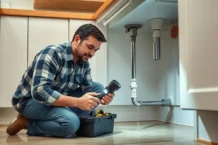
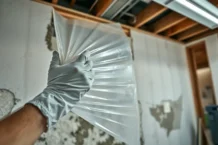
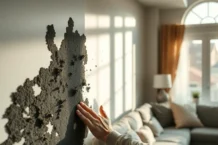

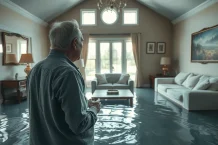
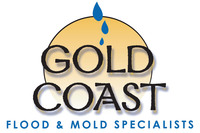


Follow Us!